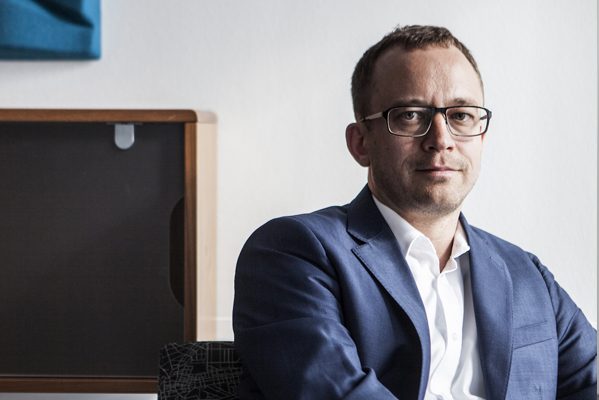Before the deluge: How cyber security must evolve to keep up with incoming levels of 5G data

The torrents of data that will be transmitted via 5G technology will make today’s 3G and 4G networks look like gently babbling streams, with it substantially expanding network capacity, reducing overall network costs, and delivering seamless connectivity. So says, John Vestberg, CEO of Clavister.
That is the justifiably confident prediction of many in the sector, who see 5G’s unique combination of high-speed connectivity, very low latency, and all but universal coverage as the means of achieving the full potential of smart cities, the internet of things (IoT), automated vehicles, mainstreaming virtual reality, machine learning and, eventually, artificial intelligence.
The future depends on 5G: that’s the promise. In reality, getting to that future will depend on a number of factors. Not least are the cyber security measures in place to protect networks and data.
Cyber security challenges
The roll-out of the technology is still in its infancy, although the latest Ericsson Annual Mobility Report predicts 550 million 5G subscriptions in Europe by 2022. But it is not too early to consider the immense power that 5G networks will have when they mature, and the responsibility to protect unprecedented node volumes of commercially, personally and industrially sensitive data-in-transit and data-at-rest that will come with it.
Although mobile network operators have invested heavily in protecting 3G and 4G traffic, relying on these techniques to safeguard 5G-driven volumes is like using household plumbing to protect leaks from the canals of Stockholm. They simply cannot scale to meet the task.
It is hard to overstate the security challenge. 5G fundamentally shifts key aspects of the conversation around network security; the multiple vectors to protect; the increased activity at the edge of the network; the continuing prevalence of 4G and earlier technologies; and the cost of security. All are essential issues to address.
Network complexity
Consider the number of vectors to be safeguarded. There’s core network traffic, internet traffic and traffic from an increasingly diverse ecosystem of roaming partners. Then there’s the backhaul between core and edge, as well as traffic to base stations at the edge itself. Within the network itself are critical back-end, billing, and other systems all of which need to be covered by any available solution. No weak links; no exploitable gaps.
That becomes more complicated still when you consider that 5G changes the shape of the network to be protected. We’ve already seen corporate networks become far less centralised as COVID-19 drove workers out of concentrated, city-centre locations and into geographically dispersed home offices. 5G does something similar to a network. It’s no longer about protecting one central point, but an entire, widespread ecosystem.
Moving to the edge

John Vestberg
The telecommunications sector has responded rapidly by upping investment in 5G-related technologies. But support for more broadband usage, cloud services and video streaming, among others, also drives a vast increase in network end-points many of which have the same computational power as the leading PCs of just ten years ago.
It is a powerful, self-reinforcing accelerant of intelligent edge computing. And as 5G increasingly pushes functions to the edge of the network, security measures must follow. Industry developments in small-cell technologies, miniature base stations, and massive multiple-input multiple-output (MIMO) arrays must all be catered for, demanding security solutions that can be installed and operated at the edge. The challenge is to ensure that these security deployments do not impact network performance and undermine the justification for introducing 5G in the first place.
Managing costs
Another issue is that telecoms network security has always been associated with high costs. Effectively throwing a security blanket over all possible data usage and having it widely spread enough to handle fluctuating demand requires huge provisions, and operators must balance low average revenue per user (ARPU) against the expectation to invest heavily, which is clearly a mismatch.
The traditional approach has been large CAPEX-based investment in big proprietary hardware products that have enough headspace to allow for increasing capacity demands, before reaching limits when additional hardware is then needed. Adding further complexity, while 5G usage is increasing, 4G isn’t going anywhere, so operators need to cater for multiple technologies. It’s costly.
There needs to be another way for operators to expand network capabilities including security more consistently as demand grows, and offerings that are software-defined, virtualised, containerised and volume-based can provide this flexibility.
Counteracting the requirement for expensive priority hardware, a software-defined and virtualisation approach enables operators to start their journey to cloud-native 5G and in the mean-time make use of more readily available hardware. Requiring a lower initial investment threshold, operators can then scale networks in line with actual usage meaning greater cost efficiencies.
Everyone’s business
Right now, developers are rightly focusing on issues like sharing bandwidth, interference and ensuring zero disconnections, among others. These are essential for the smooth operation of future networks. But as providers incorporate 5G alongside their existing 4G networks, operators need to think about securing every aspect of their journey to 5G.
A multi-faceted, high performance, instantly scalable approach offering ease of use and great flexibility will be needed. Because when torrents of anything start sluicing through ill-prepared pipes, there’s only one possible result. And in the muddy deluge that follows, no one comes out clean.
The author is John Vestberg, CEO of Clavister.
Comment on this article below or via Twitter @IoTGN
